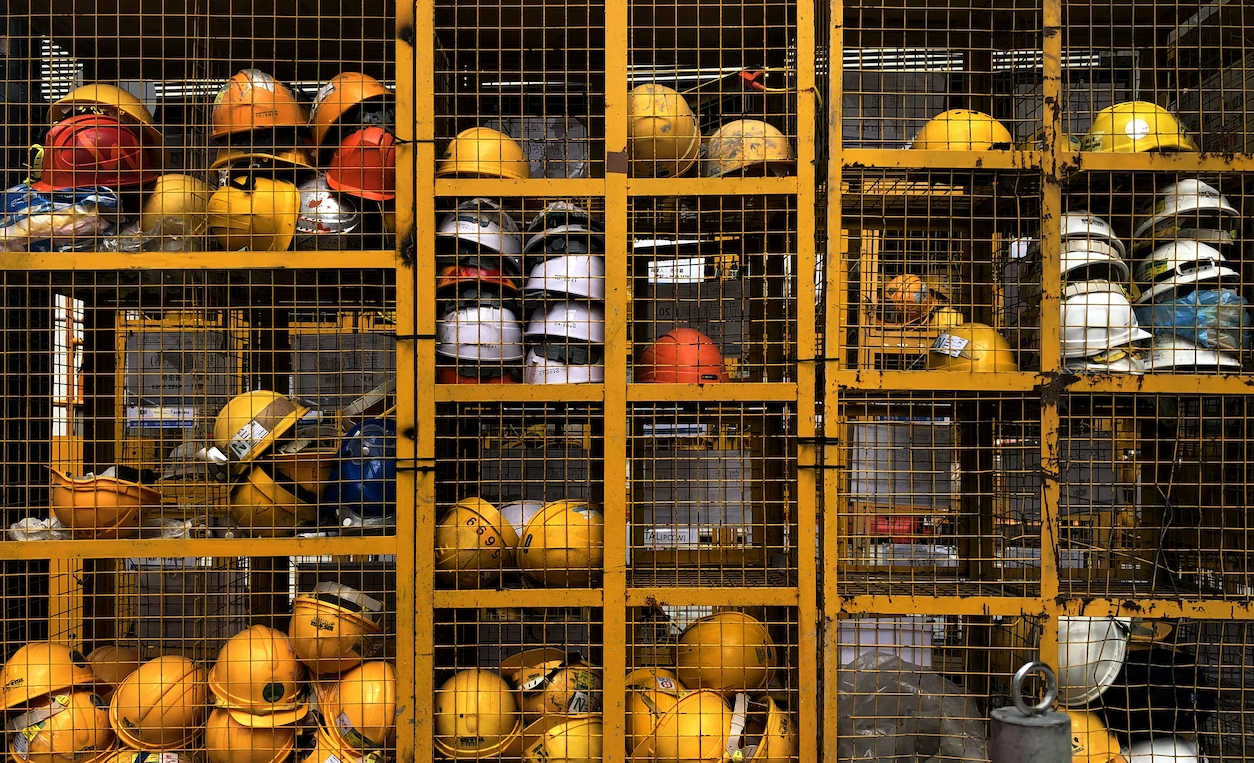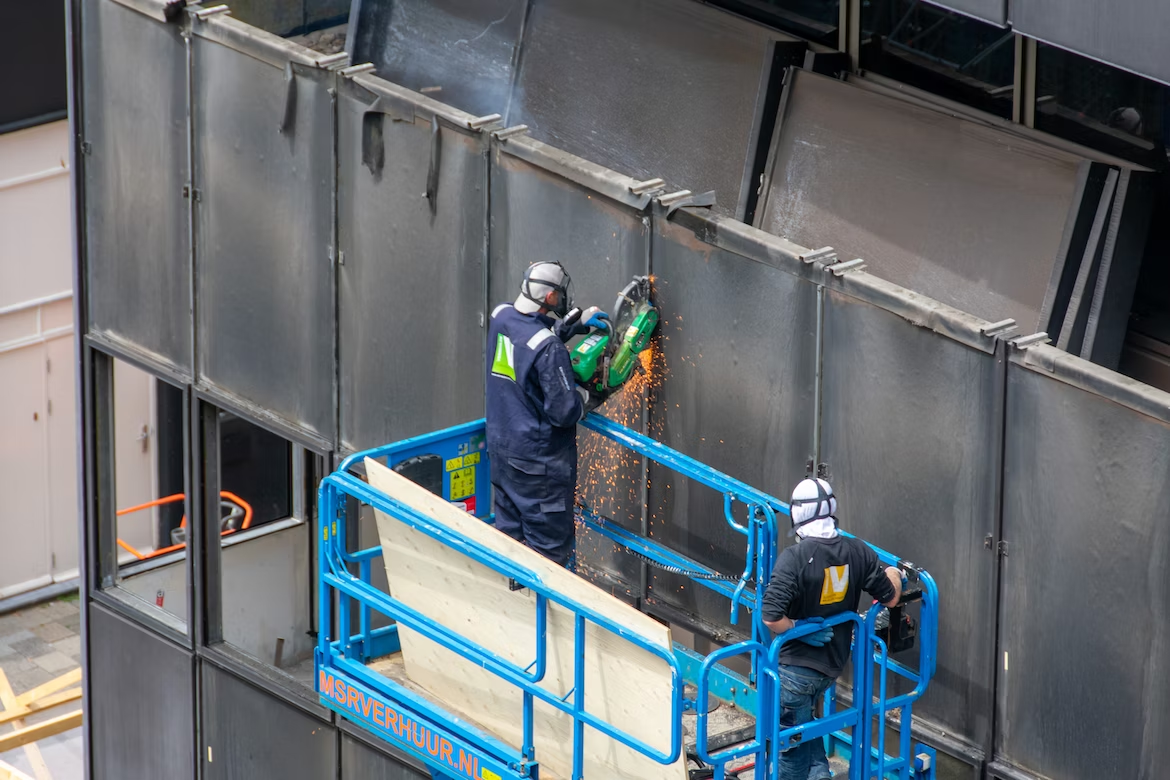In the fast-paced world of construction, safety has become a paramount consideration.
Countless on-site activities, from operating heavy machinery to working at towering heights, present a myriad of potential risks.
Creating a safety-conscious work environment is not just about mitigating these risks, but also about fostering a culture that values the well-being of every team member.

This document seeks to offer smart, practical suggestions on how to build safety on site, forming the cornerstone of any successful construction project.
Let’s delve into the strategies that can transform your construction site into a haven of safety and efficiency.
Emphasizing the Importance of Safety Training
At the core of any strong safety program lies a comprehensive safety training procedure.
Every team member should be well-versed in all relevant safety protocols, from proper attire to the handling of hazardous materials.
Investing in quality safety training sessions is essential for instilling these principles among your workforce.
Make sure everyone is up to date with their certifications and that all employees have access to the necessary safety equipment.
On the other hand, on-site safety protocols should be regularly reviewed to ensure they remain applicable.
Consider conducting a survey or focus group with your team members and use this feedback to identify any shortcomings in the safety procedures.
Being on the same page with your team when it comes to safety is key.
Establishing Clear Safety Protocols
In addition to providing adequate training, it’s also important to establish clear protocols for all on-site activities.
Make sure everyone on your team is familiar with the rules and what needs to be done when an incident arises.
Additionally, provide supervisors with detailed instructions on how to handle severe safety violations.
Your safety rules should be easily accessible and regularly referenced during training sessions, toolbox talks, or other meetings.
Put up visible signs around the construction site that remind everyone of the importance of following these rules.
This is a great way to reinforce your team’s commitment to safe practices and ensure they adhere to the protocols at all times.
Your policy should also include provisions for addressing any potential safety issues.
Legal Implications of Injuries
Unfortunate accidents may happen even when safety protocols are strictly followed.
In such a situation, it’s important to understand the legal implications of any potential injuries before they occur.
Make sure that all team members have access to up-to-date information on workers’ compensation insurance and other relevant policies, should an incident occur.
Also, personal injury lawyers should be on standby, just in case the worst-case scenario comes to pass.
Lawyers can help you navigate through the legal repercussions of any potential accidents and ensure that your interests are protected.
The last thing you want is to be caught off guard when an unfortunate event happens, or worse, to be caught unaware of your rights and responsibilities.
Risk Assessment and Management
Identifying and managing potential risks is a crucial part of any safety strategy.
Conduct regular hazard assessments to identify any areas of the construction site that pose a potential danger.
Then, plan accordingly to reduce the risk of potential accidents or mishaps.
This could involve anything from implementing new safety protocols to repairing damaged equipment or hazardous structures.
Also, use technology such as drones or sensors to monitor the safety of your construction site.
This can help you detect any potential issues before they become a major problem, improving both safety and efficiency on-site.
Knowing that you have safety measures in place should give your team the peace of mind to focus on their task without having to worry about potential risks.
Communication is Key
Above all, communication between team members is key to achieving a successful safety program.
Encourage open dialogue among your staff and ensure that everyone is aware of the safety protocols.
Additionally, foster a culture where everyone feels empowered to speak out when they notice something wrong.
Let your team know that their feedback is valued and that you are all working together towards the same goal: the safety of everyone on site.
A good idea to promote communication is to conduct monthly safety meetings.
Use these sessions to discuss any potential issues that have arisen or simply just as an opportunity for team members to raise their concerns in a non-confrontational setting.
A lot of great ideas and solutions can come from such conversations.
Regular Equipment Maintenance
When it comes to on-site safety, regular maintenance of the equipment is essential.
Make sure to inspect all tools and machinery frequently to ensure they are in proper working order.
If any damaged or malfunctioning parts are noticed, take appropriate action to repair them before using the equipment again.
Moreover, make sure that all team members know how to properly operate the tools and machines they will be using.
Providing them with manuals and instructions can go a long way in preventing accidents or injuries due to incorrect use of the equipment.
The last thing you want is for your team to be using tools they are unfamiliar with, as this could potentially lead to serious injury.
Health and Hygiene
Provide your workers with clean portable toilets, showers, and necessary facilities that ensure their well-being.
Make sure all the necessary safety supplies are readily available on site such as masks, gloves, and protective clothing.
Also, encourage team members to take regular breaks throughout the day and stay hydrated while working in hot and humid conditions.
Doing so will help them stay alert and focused on their tasks, leading to increased safety on site.
Finally, put into place a good waste disposal system that ensures the site remains clean and safe from potential pollutants or hazardous materials.
Everyone should be aware of their responsibilities when it comes to separating and disposing of waste properly to minimize the risk of contamination. It gives everyone peace of mind, knowing that the site is kept clean and safe.
Maintaining safety on construction sites is a multifaceted task that requires careful attention to a variety of factors.
From effective communication and regular equipment maintenance to a comprehensive understanding of legal implications, every aspect contributes to the overall safety and well-being of the workforce.
By prioritizing safety, engaging in regular risk assessments, and fostering a culture that values input from all team members, construction companies can significantly reduce the potential for accidents and injuries.
Furthermore, by adopting a proactive approach towards health and hygiene, we can ensure a healthier and safer working environment for everyone involved.
Remember, a safe site is a productive site, and the safety of your team should always be your top priority.











